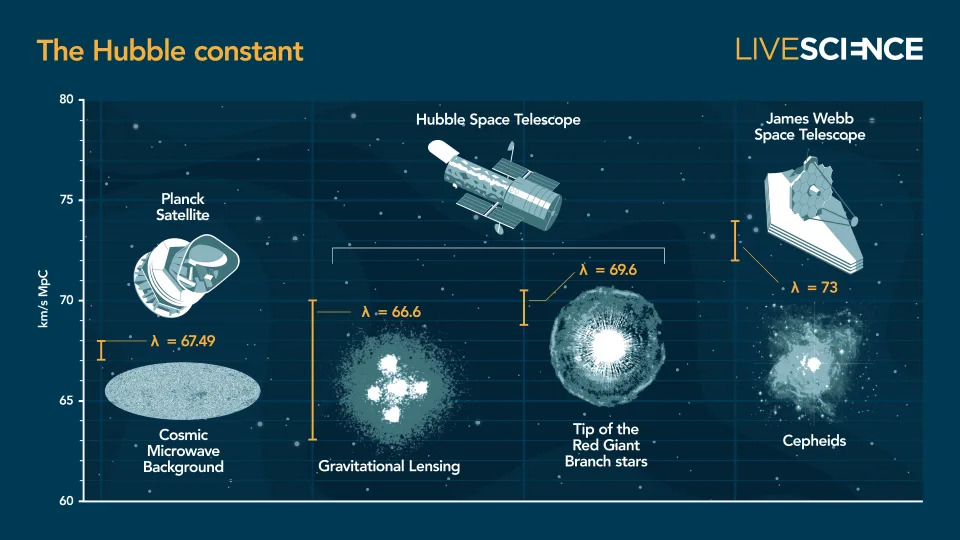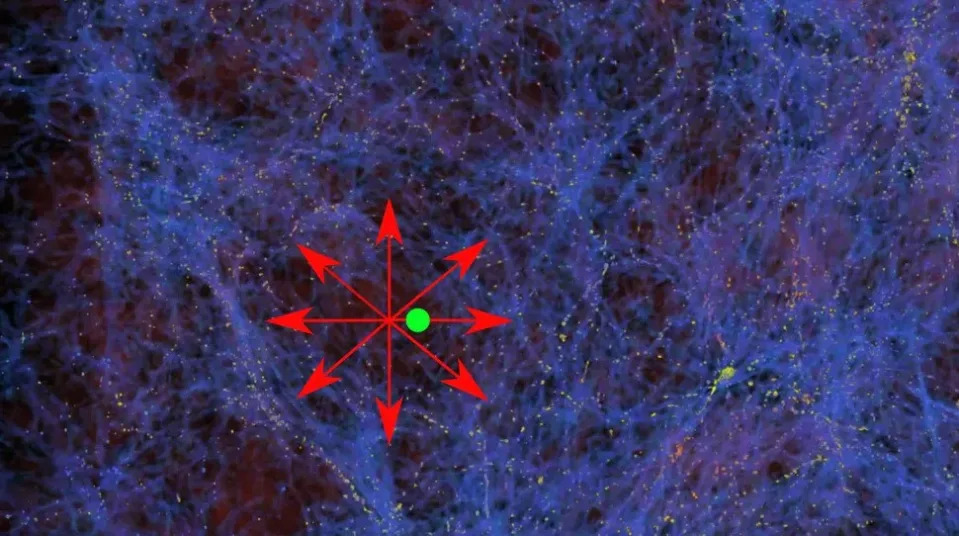Kalyn Womack
Thu, December 21, 2023

Photo: Doug Hoke/The Oklahomian (AP)
A man found guilty in a 1975 murder has spent what the National Registry of Exonerations calls the longest prison sentence on a wrongful conviction. Glynn Simmons, now 71 years old, was named a suspect in an armed robbery that left the clerk of a liquor store in Edmond, Okla. dead, according to the National Registry of Exonerations.
A witness to the incident and a patron who was shot but survived both told the police they couldn’t make out who the robbers were. However, somehow Simmons ended up getting swept into a lineup and was charged with both robbery and capital murder.
The ruling makes Simmons eligible for up to $175,000 in compensation from the state for wrongful conviction and opens the door for a federal lawsuit against Oklahoma City and law enforcement involved in Simmons’ arrest and conviction, defense attorney Joe Norwood said Wednesday.
Compensation, though, is likely years away, Norwood said and Simmons is currently living on donations while undergoing treatment for cancer that was detected after his release from prison.
Oklahoma law states that the maximum compensation an exonerated person can receive is $175,000. However, democratic state Rep. Cyndie Munson is behind a bill to change that to $50,000 for every year they spent in prison, per KOCO News. So far, 35 states have implemented this into law.
Until the bill becomes law, Mr. Simmons is living off GoFundMe donations which have now reach up to over $100,000, surpassing his goal of $50,000. Simmons plans to use the funds to put a roof over his head, clothes on his back, food and pay for the medical treatments he needs for liver cancer.
“I plan to use my remaining time to help others who are still stuck where I was. We need to fix this system so that what happened to me will never happen to anyone else, ever again!” Simmons’ donation page reads.
Glynn Simmons declared innocent after serving 48 years in prison – believed to be the longest of any exoneree
Dakin Andone, CNN
Thu, December 21, 2023
An Oklahoma judge on Tuesday declared innocent a man who spent 48 years in prison for a murder he did not commit – believed to be the longest amount of time served by anyone wrongfully convicted in the United States.
“This is a day we’ve been waiting on for a long, long time. It finally came,” Glynn Simmons, 70, told reporters, according to local news outlet KFOR, after the hearing where an Oklahoma County District Court judge issued an order formally declaring him innocent.
“We can say justice was done today, finally,” he said. “And I’m happy.”
Simmons served 48 years, one month and 18 days following his conviction, earning him a grim distinction: He served the longest wrongful incarceration of any exoneree in the US, according to the National Registry of Exonerations. The average length of a wrongful incarceration is just over nine years, per the registry, which tracks and catalogs exonerations going back to 1989.
“Obviously, we’re just very happy,” Joe Norwood, an attorney for Simmons, told CNN in an interview Thursday. “He felt vindicated to have his name … cleared, that he is innocent and didn’t do this. I’m just real happy that all the work paid off for him.”
Simmons was released on bond in July, when the judge vacated the 1975 judgment and sentence at the request of the Oklahoma County District Attorney, who said in a news release her office found evidence was withheld from Simmons’ defense attorneys — a so-called Brady violation.
In September, District Attorney Vicki Behenna announced she would not seek a retrial, pointing, in part, to a lack of physical evidence.
Simmons’ four-plus decade ordeal officially ended Tuesday with Judge Amy Palumbo’s amended order dismissing the case against him with prejudice.
“This Court finds by clear and convincing evidence that the offense for which Mr. Simmons was convicted, sentenced and imprisoned in the case at hand, including any lesser included offenses, was not committed by Mr. Simmons,” Palumbo stated in the order.
CNN has reached out to the prosecutor for comment on the judge’s declaration of innocence.

Glynn Simmons is seen after Judge Amy Palumbo ruled to approve his "actual innocence" claim during a hearing at the Oklahoma County Courthouse on Tuesday. - Doug Hoke/The Oklahoman/AP
State law limits compensation to $175,000
Simmons was just 22 when he and another man were convicted of murdering Carolyn Sue Rogers during a liquor store robbery on December 30, 1974, according to the district attorney’s office and the National Registry of Exonerations.
The prosecution’s case at trial depended on the testimony of an 18-year-old woman who was shot in the head during the robbery, the Registry said.
Interviewed by police days later, the woman said she couldn’t remember much. But by the time of the trial, the woman said she had identified Simmons and his co-defendant in a lineup, the Registry said. She testified she had identified no other suspects when, in fact, she had identified four other individuals during eight separate lineups, per the Registry.
None of them were Simmons or his co-defendant, Norwood said.
At trial, Simmons testified he wasn’t even in Oklahoma at the time of the robbery: He was in Harvey, Louisiana, he said, playing pool. Several witnesses also testified that they saw him in Harvey that day and the day after, the Registry said.
Ultimately, Simmons and his co-defendant were convicted, the district attorney’s office news release said, and, at first, sentenced to death. Their sentences were later modified to life in prison ultimately as the result of a Supreme Court ruling that found the death penalty was unconstitutional due to arbitrary and uneven application, the Registry said.
Simmons’ co-defendant was released on parole in 2008, the district attorney’s office said.
Through the years, Simmons maintained his innocence, the Registry said. Eventually, a private investigator located a report that the 18-year-old witness had identified other subjects and had considered her identifications overnight before deciding she was confident in them. That report was never shared with Simmons’ defense attorneys at the time of his trial, Norwood and the Registry said.
Now, Simmons and his attorneys are hopeful he can receive some compensation for the time he was wrongfully incarcerated, Norwood told CNN.
Tuesday’s order, he said, allows them to begin the process of seeking that compensation which, in Oklahoma, is capped at $175,000. But there is no guarantee, Norwood added, and it’s possible they will have to fight for it in court.
In the meantime, Simmons is seeking financial help through a GoFundMe – his only source of income after nearly five decades during which he was unable to gain skills he could use to make a living, Norwood said. On top of that, Simmons has been diagnosed with stage four cancer and is undergoing chemotherapy.
“Between his medical condition and being 70 years old and (having) the ability to provide for himself robbed from him,” Norwood said, “he needs help from people.”
Oklahoma judge rules Glynn Simmons, man who wrongfully spent nearly 50 years in prison for murder, is innocent
Jessie Christopher Smith and Kayla Jimenez, USA TODAY NETWORK
Wed, December 20, 2023
OKLAHOMA CITY — An Oklahoma man who served the longest wrongful imprisonment in U.S. history has now been formally declared innocent of a murder he has always maintained he did not commit.
Oklahoma County District Court Judge Amy Palumbo ruled in favor of Glynn Simmons, 71, updating the dismissal of his murder conviction with a declaration of "actual innocence" Tuesday.
Simmons had been convicted of the December 1974 murder of Carolyn Sue Rogers, who died after being shot during an Edmond liquor store robbery. He was imprisoned for more than 48 years and a former death row inmate, according to data from The National Registry of Exonerations.
Palumbo said she had reviewed decades' worth of transcripts, reports, testimony and other evidence while preparing to make her decision before granting Simmons' request.
"This Court finds by clear and convincing evidence that the offense for which Mr. Simmons was convicted, sentenced and imprisoned in the case at hand, including any lesser included offenses, was not committed by Mr. Simmons," Palumbo said.
Simmons said Palumbo's ruling Tuesday was a confirmation of something he had known all along for nearly 50 years: that he was an innocent man.
"This is the day we've been waiting on for a long, long time. It finally came," Simmons said. "We can say justice was done today, finally, and I'm happy."
Simmon's attorney: 'He has 50 years stolen from him'
One of Simmons' attorneys, Joe Norwood, said the state of Oklahoma wrongfully took a chunk of his life away.
“He had 50 years stolen from him, the prime of his work life when he could have been getting experiences, developing skills. That was taken from him, by no fault of his own, by other people,” he said.
Kim T. Cole, a civil rights attorney based in Texas, supported Simmons on Tuesday and said the state needed to be held accountable for “robbing” Simmons of five decades of his life.
"It’s too late for justice, at this point, but it’s not too late for retribution," Cole said. "Retribution is due."
Prosecutors, attorneys dispute 'failure of proof' in Simmons case
After 48 years of incarceration, Simmons was released from prison earlier this year when Oklahoma County District Attorney Vicki Behenna determined that prosecutors had violated Simmons' right to a fair trial by not disclosing a police lineup report to his trial lawyer.
While Behenna had decided not to pursue a retrial and agreed to dismiss Simmons' murder conviction, she had been reluctant to describe Simmons' case as "exonerated." Her office had objected to Simmons' actual innocence claim, saying that the state could not prove Simmons' guilt "beyond a reasonable doubt" and that an eyewitness would not recant her identification of Simmons in 1975.
"The state had a failure of proof — that’s the only reason for the requested dismissal," Behenna wrote in court filings dated Oct. 18. "This simply is not an 'actual innocence' case where DNA was used to exonerate a person; or a conviction was obtained using ‘forensic’ evidence that was later debunked; or where an eyewitness recanted their identification; or where the actual perpetrator of the crime confessed to the commission of the crime and the details of that confession were later corroborated by independent evidence."
Simmons' attorneys, Joe Norwood and John Coyle, said that the lineup report was "powerful innocence evidence" because it showed the eyewitness, who had survived being shot in the head during the robbery, did not actually identify Simmons.
"Not only would the withheld lineup report have changed the outcome of Simmons trial, but it would also have prevented the State from being able to try Simmons at all," the lawyers wrote on Nov. 17. They also pointed to the testimony of a dozen witnesses who said that Simmons had been in Louisiana at the time of the murder.
His attorneys also said that the "actual innocence" claim was a necessary first step in Simmons being able to pursue monetary compensation from the state for the several decades he spent wrongfully imprisoned. But any compensation, Norwood cautioned, was not guaranteed and could be long into the future.

Glynn Simmons reads the court order Tuesday as his attorneys Joe Norwood and John Coyle, left, niece Cecilia Hawthorne and Madeline Jones, right, look on after Judge Amy Palumbo ruled to approve Simmons' u0022actual innocenceu0022 claim.
Will Simmons be compensated by the state?
Simmons is eligible for up to $175,000 in compensation from the state of Oklahoma for the wrongful conviction but it could be years before he sees any of that money, Norwood said.
Norwood added that Simmons is living off of donations, primarily from GoFundMe, while he's undergoing treatment for cancer, The Associated Press reported.
“Whatever compensation he has coming is down the road, but I would just encourage people to donate to Glynn's GoFundMe, because money ain’t showing up in his bank account tomorrow," Norwood said.
Simmons can also file a federal lawsuit against Oklahoma City and law enforcement officers who were involved in Simmons’ arrest and conviction, Norwood said.
'Black people's voices need to be heard'
Don Roberts, Simmons' co-defendant in 1975, also was convicted of Rogers’ murder. At the time, both men received the death penalty, but their sentences were modified to life in prison after a 1977 U.S. Supreme Court decision. Roberts was released on parole in 2008.
The University of Michigan Law School’s National Registry of Exonerations lists Simmons as the longest-served wrongful incarceration in its database of exonerees.
Simmons’ exoneration comes amid a time of heightened scrutiny of both mass incarceration and the death penalty throughout the United States. Counties with high numbers of wrongful convictions show patterns of systemic misconduct from police and other officials, and researchers argue that race often plays a role.
Perry Lott — another high-profile exoneree who saw his 1988 Pontotoc County rape conviction officially overturned this year thanks to DNA testing — appeared at the court Tuesday in support of Simmons. He was visibly moved as Palumbo revealed she would grant Simmons’ request, and he later told The Oklahoman, part of the USA TODAY Network, that he noticed the parallels in the cases between him and Simmons.
"People need to understand that Black people’s voices need to be heard, once and for all," Lott said. "We’re not angry, we’re not upset, but there’s an enemy out here and he’s not seen."
"Don’t be scared to stand up for what’s right," Lott added. "We need your voice in this war against injustice."
Who are the 11 people?: Oklahoma tied for the 2nd most death row convictions overturned in the US.
Who else has spent decades in prison before being exonerated?
The University of California Irvine Newkirk Center for Science and Society, the University of Michigan Law School, and the Michigan State University College of Law are tracking the lengths of time exonerees have been incarcerated across the country.
"While the average time spent in prison for all of the exonerees in the National Registry of Exonerations is just over nine years, there have been some prisoners who spent an extraordinary amount of time imprisoned for crimes they did not commit," the project database reads.
Before Simmons' exoneration, Anthony Mazza spent the longest time incarcerated after he served 47 years and two months in prison in Massachusetts. He was originally sentenced to life in prison without parole for a murder in Boston. He was exonerated in 2020.
Richard Phillips was imprisoned for 46 years in Michigan after being sentenced to life in prison for murder before he was exonerated in 2018. Isaiah Andrews was imprisoned for more than 45 years in Ohio in 2020. He died at the age of 83 in 2022. And Wilbert Jones served more than 44 years in prison in Louisiana before he was cleared of rape charges in 2018.
Dozens of other exonerees across the nation have spent more than 30 years in prison, according to the National Registry of Exonerations.
'The truth has finally set him free.' Man released after serving 28 years for crime he didn't commit
Contributing: Associated Press

Alexys Woods, with the Oklahoma County public defender's office, takes a selfie with Glynn Simmons on Tuesday after the ruling.
This article originally appeared on Oklahoman: Glynn Simmons formally exonerated in Oklahoma after 48 years in prison


















